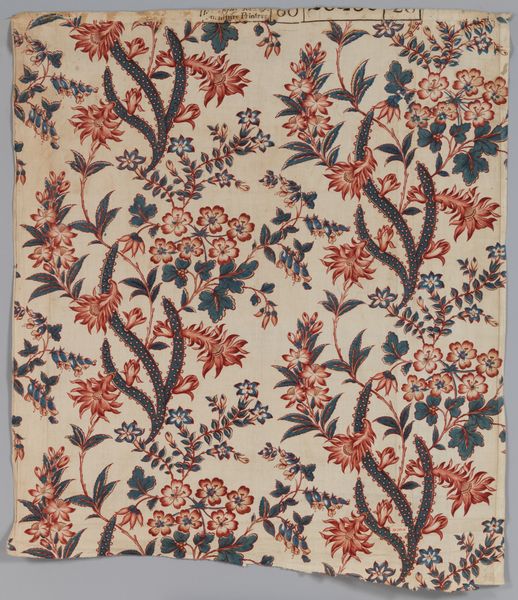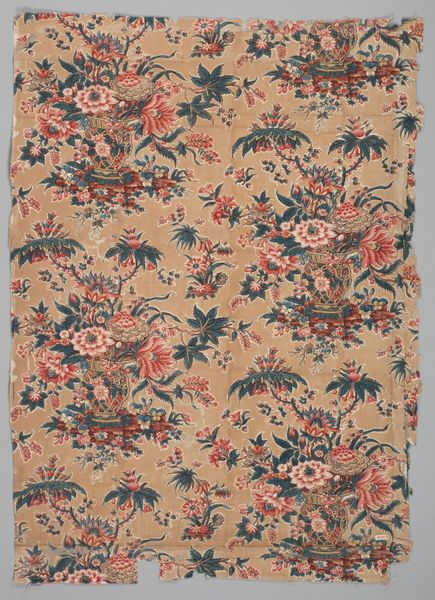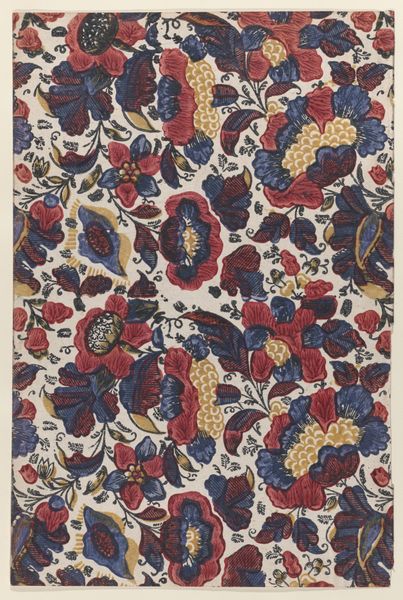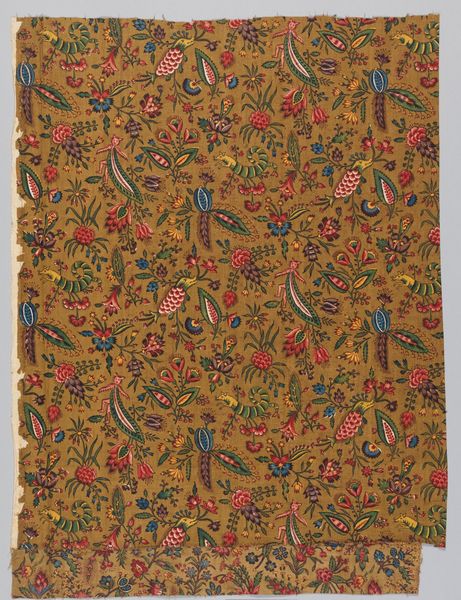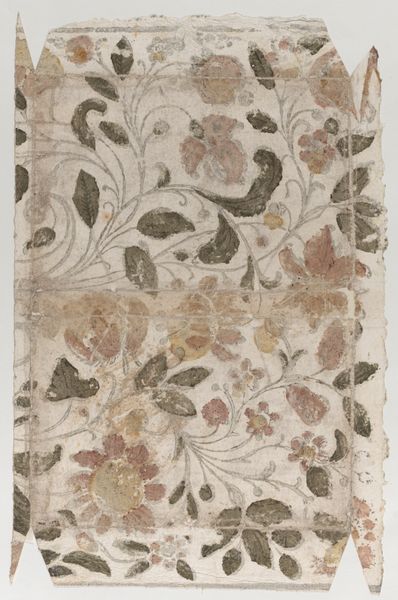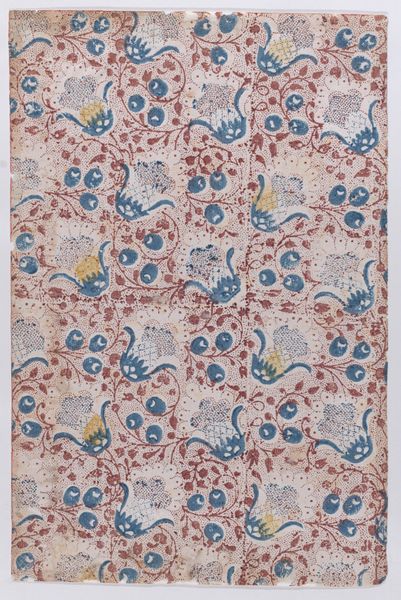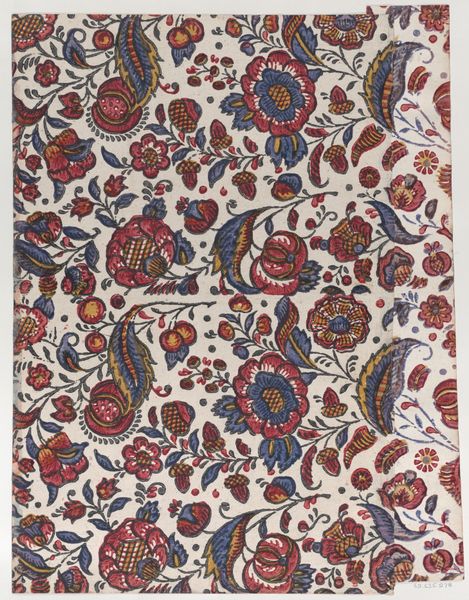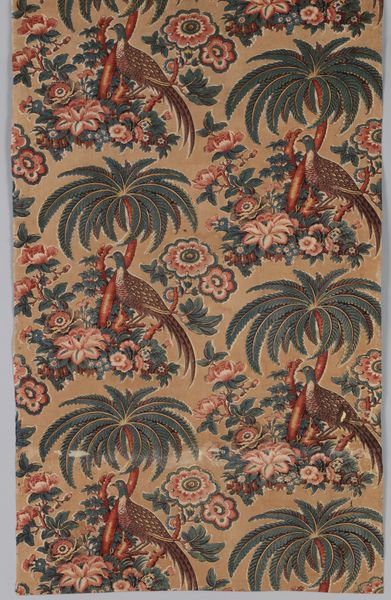
print, textile
#
organic
# print
#
pattern
#
textile
#
romanticism
#
decorative-art
Dimensions: L. 114 x W. 48 inches 289.6 x 121.9 cm
Copyright: Public Domain
Curator: This printed textile, dating back to 1799, is known as “Floral Print,” crafted by Hartmann et Fils. Currently, this remarkable piece of decorative art finds its home within the Metropolitan Museum of Art's collection. Editor: It strikes me immediately as both opulent and faintly melancholic. The deep reds and browns against the muted background evoke a sense of autumnal abundance, but the closely packed design borders on claustrophobic. Curator: The density is quite characteristic of the late 18th-century Romantic sensibility, especially in decorative arts. The imagery echoes themes prevalent during the era—the burgeoning interest in natural sciences, the ornamental appreciation of botanical forms... There's also the cultural impact of exploration reflected in the motifs. Editor: Exploration that was intrinsically linked to colonization and exploitation, let’s not forget. While these patterns are beautiful, there’s a complicated narrative underlying this visual appeal, tied to trade routes and the exploitation of resources and labor from colonized lands. This era’s romanticizing of nature served to legitimize control over it. Curator: True. Symbolically, flowers represent transience, the beauty of things that fade, reflecting the fleeting nature of life and earthly beauty... the blooms serve as reminders. It connects, doesn't it, with broader human experience, the ephemeral nature of the world we live in, something every society through human history shares? Editor: Absolutely, but even that universal human experience is filtered through a lens of privilege. Only certain classes in society could afford textiles like this. The material’s existence itself becomes a testament to socioeconomic disparity of its time. To truly connect with this era we need to think through what those historical and economic inequities signify in the artwork’s place within broader Romantic and decorative movements. Curator: That's a valid observation. I suppose our individual experiences, colored by time and social position, shift the image in ways unimagined by the artisan. It offers a lot more to ponder. Editor: Definitely. A beautiful pattern, undoubtedly, but steeped in a history we must continuously engage with.
Comments
No comments
Be the first to comment and join the conversation on the ultimate creative platform.

